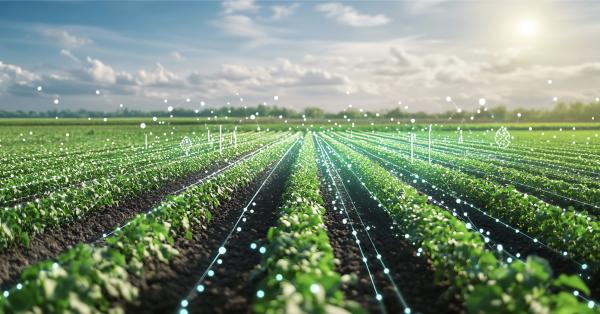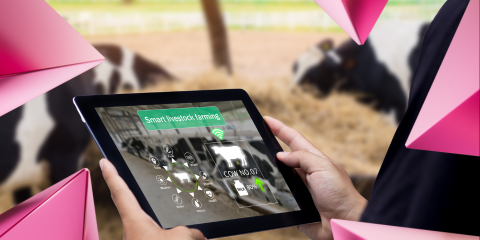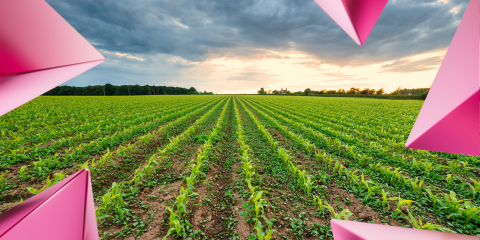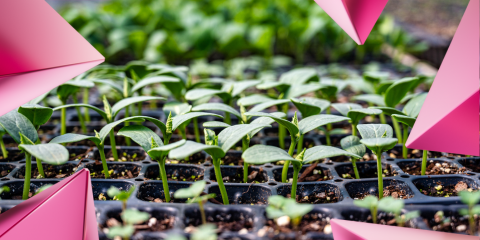
Reliable connectivity, including 5G, will unlock the next era of agriculture. Farmers and growers can expect increased productivity, higher yields, and a firmer financial footing while maintaining high standards.
Recent spikes in fertiliser costs and labour shortages have highlighted how exposed the sector is to shocks. Increased volatility in the weather from climate change is already harming crops and livestock, and in the longer term this will only get worse.
While not a silver bullet to these macro issues, connectivity - and the technologies it powers - make farms more agile and responsive to their environments.
More data-intensive technology deployments enable farmers and growers today to harness the power of the Internet of Things (IoT), robotics and artificial intelligence (AI).
Read more to discover how.
Benefits of 5G in Agriculture
Labour-intensive activities can be supported through a range of 5G-enabled technologies – with AI creating opportunities for tasks to be completed without a human needing to be in full control.
Agricultural sensors replace manual data collection in the field, with real-time data enabling faster responses to ecosystem changes. Robots can take on per-plant tasks such as weeding and harvesting, with autonomous vehicles taking on large-scale tasks such as ploughing and fertilising.
Sunderland’s 5G Innovation Region programme considers 5G and advanced wireless connectivity as a key component of its regional digital strategy. Advanced wireless sensor technology will be utilised on farms to drive automation, increase efficiency, and improve the environmental sustainability of farming using real data collected from on-farm crops, soil, livestock and environmental sensors.
Connectivity enables Internet of Things (IoT) applications which can monitor soil content and nutrients, optimising fertiliser and water use and cost.
When combined with other technologies there can be compounding benefits - one trial on 5G-enabled ‘per plant’ farming saw a potential 200% increase in crop yields. Unmanned aerial vehicles (UAVs/drones) can enable aerial monitoring of land and animals – helping reduce pesticide use, track herds and plot grazing areas more effectively, as well as helping owners make smarter decisions with time and resources.
In addition, UK operator VMO2 has launched a trial with Cannon Hall Farm in Barnsley, throwing out some ideas of how connectivity could improve rural agriculture in the future. Connecting up the entire 126-acre estate to wipe out historic blackspots and not-spots allowed the distribution of a network of sensors and monitors around the farm, which laid the groundwork for some tests of teched-up farming concepts such as monitoring soil conditions, machinery, livestock, and land boundaries.
Trackers, sensors and switches have been installed across equipment, livestock and gates enabling farmers to monitor in real-time the location of these high-value items or receive alerts about gates being left open. Equipment and livestock theft apparently cost the agriculture industry £49.5 million last year, and this means alerts can be sent instantly if equipment moves unexpectedly or leaves the farm.
Connected soil moisture, atmospheric temperature and humidity sensors can monitor the health of crops and assess irrigation needs, reduce water use, improve crop quality and allow for targeted interventions based on real-time conditions, all of which is supposed to help mitigate damage floods and droughts have on crop viability and yield.
With connected sensors, farmers and growers can accurately monitor local area weather conditions, making it easier to anticipate and respond to weather conditions quickly – such as protecting crops from frost damage.
Advanced monitoring of agricultural environments, down to individual crop level, allows for more tailored, precise use of fertilisers and water – protecting scarce resources, minimising the use of harmful chemicals and reducing agricultural run-off.
Tags and collar sensors powered by advanced connectivity help farmers track the location of animals, reducing theft and instances of animals going astray. These tags can monitor ovulation, temperature, and indicators of ill health – tasks usually done manually.
Advanced connectivity provides the latency, bandwidth, and throughput necessary to reliably monitor aquatic conditions such as acidity levels, which can impact the health of marine animals, helping maximise yields. Digital monitoring can help identify problems much earlier, boosting animal welfare.
Basic connectivity in remote farms can often be patchy. Increased coverage supports worker welfare by ensuring they can make rapid contact in the event of an accident or emergency.
Better connectivity also supports mental health, ensuring workers have access to the internet and all the amenities it brings – such as entertainment, and communication with friends and family.
Explore the possibilities

Livestock management
Livestock management is a notoriously difficult job, but technology is here to lend a helping hand. New connectivity developments have already considerably improved the industry, making tracking and managing livestock much easier and decision-making more data-driven.

Crop production
Producing food sustainably is one of the greatest challenges facing humanity today. Over-production is common, leading to a huge amount of waste, with more than enough food being produced to feed all of the 8 billion people currently alive on the planet. Implementing sustainable farming techniques, supported by technology, can help tackle this.

Horticulture
Leveraging advanced digital technologies, precision horticulture is based on observing, measuring and responding to temporal and spatial variability. While this approach has advantages for growers, this form of cultivation is also important because it is more sustainable than conventional intensive growing methods.

Aquaculture
The growth and expansion of technologies have enabled fish farms to transform and play this integral role, becoming increasingly efficient by introducing tools to control feed timings and monitor health and growth rate as well as water quality. A strong connection is required, though, something that is not often possible for farms in remote locations.
The UKTIN Agriculture Expert Working Group is a group of voluntary experts brought together to consider key opportunities to capitalise on the benefits of advanced connectivity across the agriculture sector.
Our Supplier Directory introduces you to find a range of organisations who can help you design and deliver connectivity solutions, including those who specialise in working with manufacturers.
High Growth AI Accelerator Showcase
Join Digital Catapult for the final High Growth AI Accelerator Showcase as part of the Innovate UK BridgeAI programme
